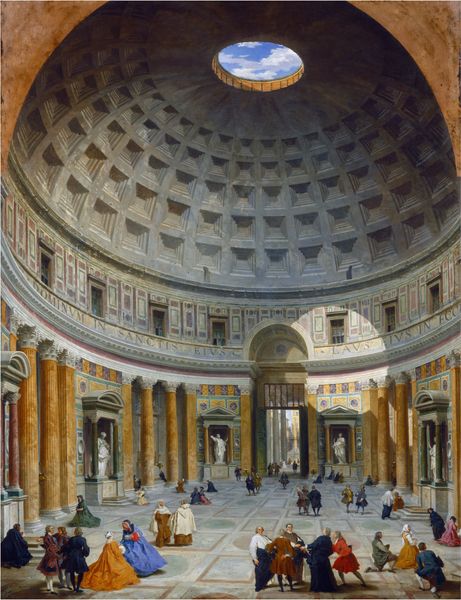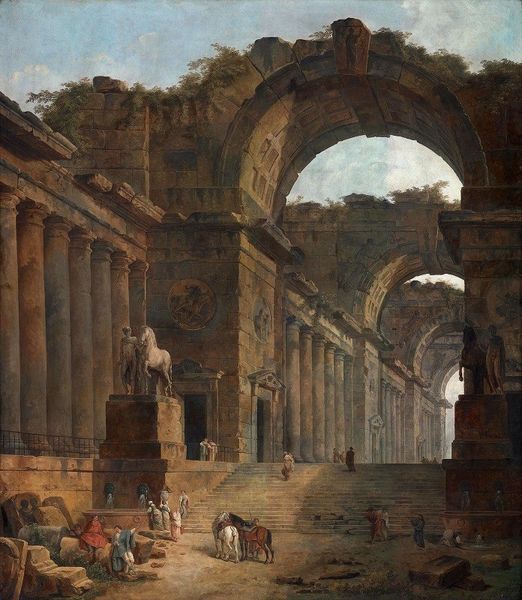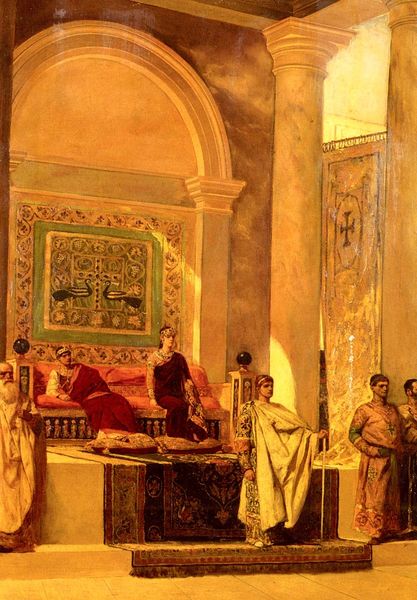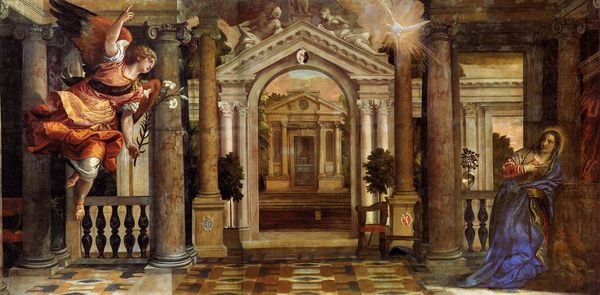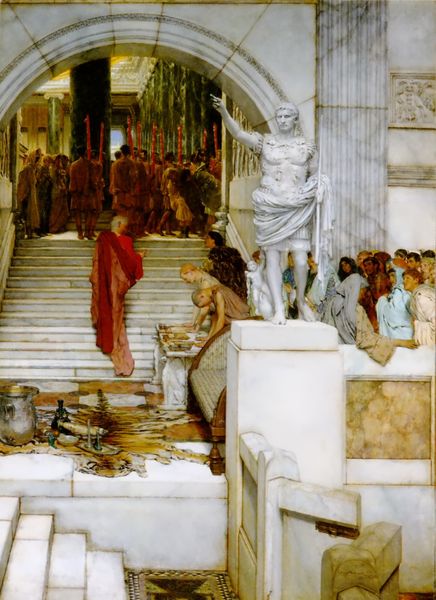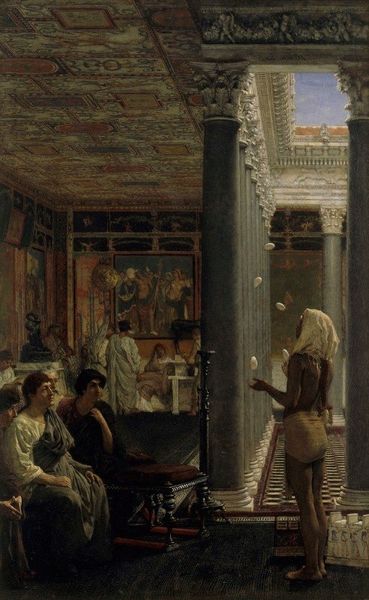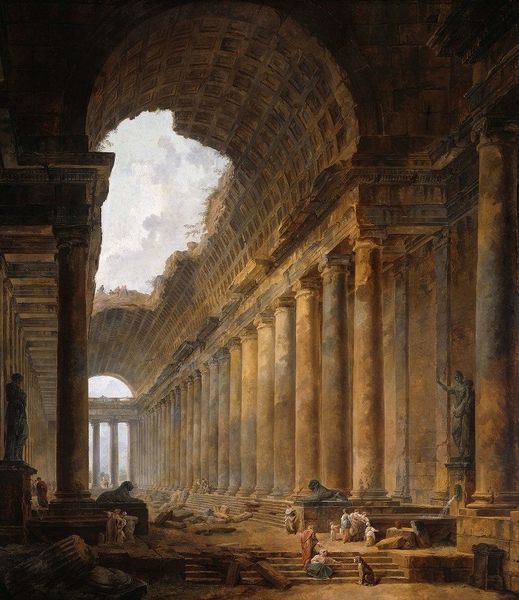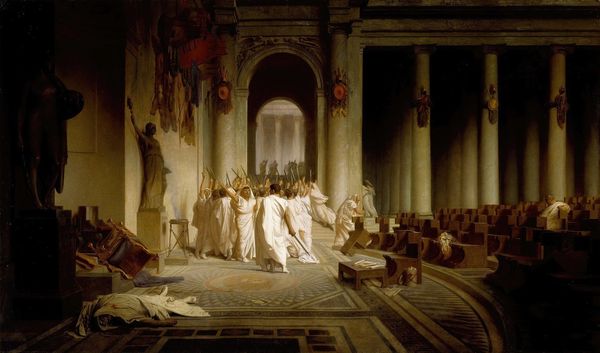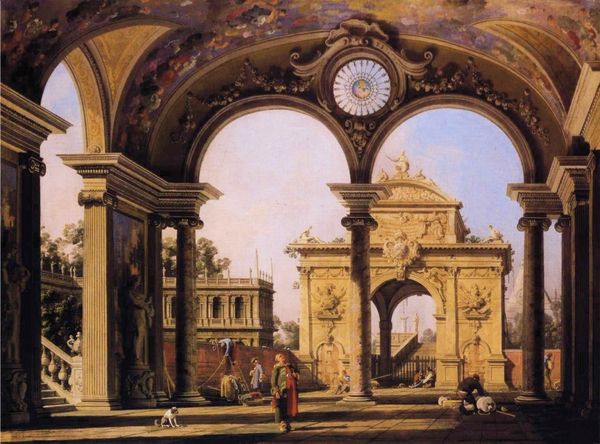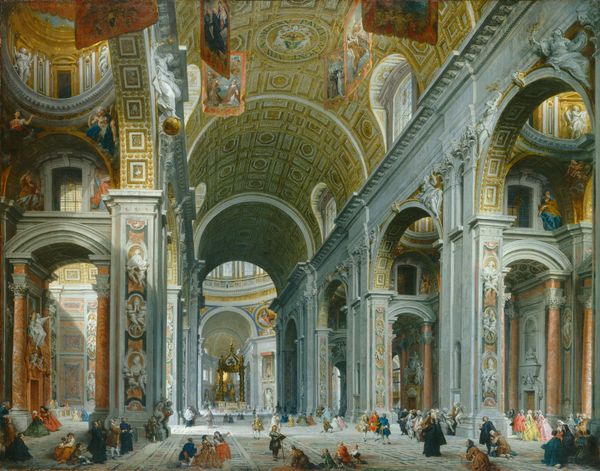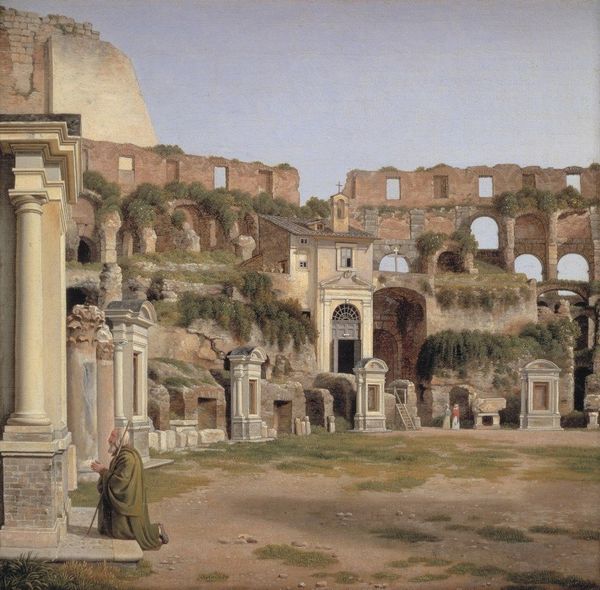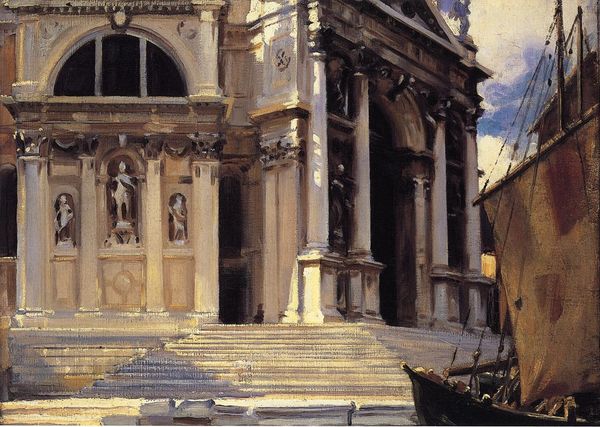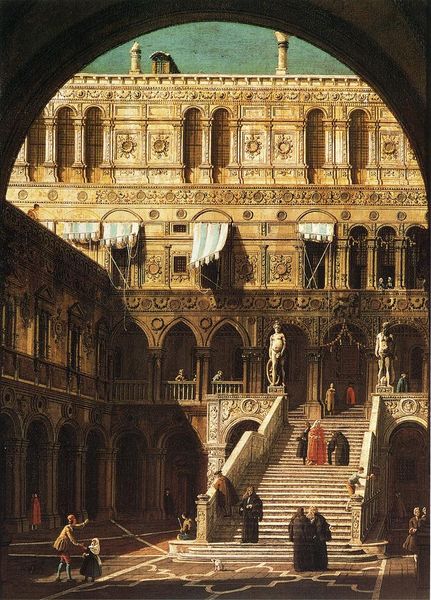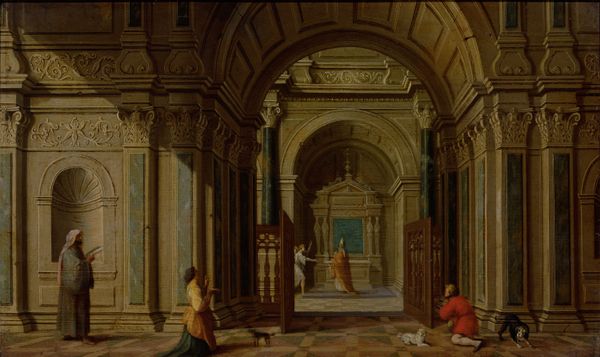
painting, oil-paint, architecture
#
painting
#
oil-paint
#
holy-places
#
historic architecture
#
romanesque
#
history-painting
#
academic-art
#
architecture
#
realism
#
historical building
#
building
Copyright: Public domain
Curator: Lawrence Alma-Tadema's "Chiesa San Clemente," created in 1863, offers an interior view of the famed Basilica. It's currently held in the Fries Museum in Leeuwarden. What are your initial thoughts? Editor: It’s a surprisingly still image, despite the architectural grandeur. The basilica feels almost deserted, lending it a somber, reflective mood. There's a definite chill in the stone, captured beautifully. Curator: The meticulous rendering of materials is something that strikes me—the oil paint meticulously applied to convey stone, marble, and those luminous mosaics. Consider the labor, not just of Alma-Tadema, but of the artisans whose work he depicts. Editor: Indeed. The mosaics practically vibrate with light. It draws the eye upward. The use of religious iconography feels reverent but also like a deliberate choice to evoke a sense of historical continuity, reaching back to early Christianity. What specific meanings are conveyed to your reading? Curator: Beyond the obvious religious connotations, the materials themselves carry a weight. The stone, the precious metals in the mosaics...these were commodities, extracted and crafted through labor, indicative of the wealth and power the Church commanded. Even the pigments have a history of their own. Editor: And speaking of power, that mosaic dome acts as a visual anchor. The cross dominates, yet it is embedded within a circular structure. Given its scale, it projects permanence, not only religiously, but temporally—a timeless symbol. Curator: I'm struck, though, by how much is suggested rather than clearly defined. The application of paint almost mirrors that distance between the viewer and this sacred place. There's a lack of explicit social commentary. Editor: Perhaps. But its presence within a specific cultural moment is palpable. How much labor went into each tiny tessera of glass and gold leaf? The picture acts almost like a mirror reflecting our own concerns with religious meaning-making. It speaks about power, of course, but also mystery. Curator: Yes, by emphasizing the human construction and materiality of a seemingly divine space, we bring it back into our world. Thank you for that insightful, multilayered perspective. Editor: Thank you. Seeing art from the angle of its material components reminds us that everything stems from specific moments.
Comments
No comments
Be the first to comment and join the conversation on the ultimate creative platform.
